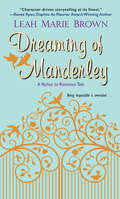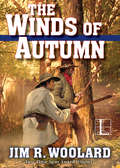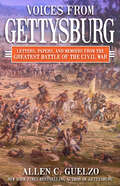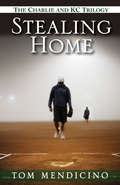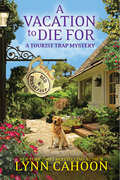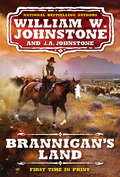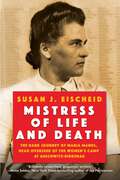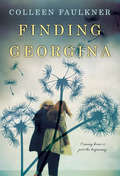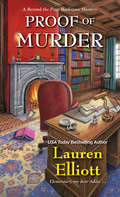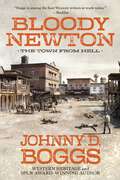- Table View
- List View
Dismissed: Tackling the Biases That Undermine our Health Care
by Kathy Palokoff Angela MarshallFacts—women in pain are much more likely than men to receive prescriptions for sedatives rather than pain medication; Black women are more than three times more likely than white women to die of childbirth-related causes. Whether it&’s age, body size, sexual orientation, or other cultural factors, bias in healthcare is an uncomfortable truth. In this first-ever book on the subject written from the author&’s unique perspective of being a doctor, a woman, and Black, Dr. Angela Marshall, a contributing health expert on CNN, Fox5 News and Let&’s Talk Lives, and repeatedly named a &“Top Doctor&” by Washingtonian magazine, candidly addresses the life-and-death issue, sharing personal and patient stories and fresh, pragmatic solutions. Have you ever felt you were treated differently by a medical professional due to your skin color, age, ethnicity, gender, or for any other reason? If so, you are far from alone. Here&’s the uncomfortable truth: Race, ethnicity, gender, sexual orientation, age, body size, and other cultural factors have a significant bearing on whether you will be diagnosed and treated correctly. Health-care providers and their patients are human, and all humans have unconscious biases that affect how we listen, observe, and act. Bias impacts patients when they are at their most vulnerable. Health-care bias can mean the difference not just between suffering and relief, but between life and death. For the first time, an author with the unique perspective of being one of America&’s top doctors, a woman, and Black, candidly addresses the issue of bias in health care, sharing personal and patient stories and pragmatic solutions. Dr. Angela Marshall, repeatedly named a &“Top Doctor&” by Washingtonian magazine, draws on extensive research, poignant stories from some of the thousands of patients she has treated, and her own compelling personal experience, to examine the bias from both patients&’ and health‑care providers&’ points of view. She offers a bold blueprint for change, filled with fresh solutions that can help everyone in our health-care system. Dismissed not only explains what so many people feel so profoundly—that the system is working against them. It also reveals what health-care practitioners, patients, and society in general can do to make it right.
Dreaming of Manderley (A Riches to Romance Tale #1)
by Leah Marie Brown&“Humor, heat, and a sexy Frenchman&” kick off this series of once-rich, now-poor sisters who must blaze their own trails to happily ever after (Helen Hardt, #1 New York Times bestselling author). Manderley Maxwell has always been the dependable, hard-working one while her younger sisters live A-list lives, courtesy of their family fortune . . . until it&’s suddenly lost, leaving behind a truckload of debt! Now Mandy is faced with two choices: play perpetual caretaker to her spoiled siblings, or finally break out of her predictable routine—by way of France . . . When Mandy&’s boss relocates for the summer, Mandy is really just trading in coffee runs for running errands through the streets of Cannes—until handsome, debonair Girard Fortune Xavier de Maloret sweeps her off her feet—by saving her from falling off a cliff. Mandy&’s walking on air—except that she&’s living in the chic shadow of the first Madame de Maloret, complete with whispers about the suddenly secretive Xavier&’s part in her disappearance. Again, Mandy has two choices: be the unfortunate, duped American—or the gutsy, fierce woman who&’ll track down the truth in the name of true love . . . &“An exquisitely written tale filled with such depth and detail, you&’ll hate to see the last page turned.&”—Cindy Miles, USA Today bestselling author &“Poignant, character-driven storytelling at its finest.&”—Renee Ryan, Daphne du Maurier Award-winning author &“Superb suspenseful writing and just enough twists and turns to keep the reader interested without an overdose of angst.&”—USA Today, Happy Ever After
A Spy's Guide to Seduction (Husband Hunters #3)
by Kate MooreAn independent lady is accidentally betrothed to a spy with a mysterious past in this Regency gem from beloved, award-winning author Kate Moore. A volume of tips for the marriage-minded brought them together, but their sweeping adventure will change all the rules of engagement . . . When her desperate mother sends her The Husband Hunter’s Guide to London, outspoken Emily Radstock rails against the slim book of manners, boldly declaring that she should wed the first “imbecile” she meets and be done with the matter. Too bad Sir Ajax Lynley overhears her outrageous proposal and holds her to it. But he’s no dullard—he’s a wily government agent who needs the cover of a beautiful fiancé to pursue a deadly enemy. To resist his charms, Emily turns to the guide she disdains—and does exactly the opposite. Dress fashionably? She enshrouds herself in black crepe. Be demure? She steps into danger and faces down criminals alongside her “intended” . . . whose thrilling seduction may be anything but a charade. Praise for Kate Moore’s previous novels “Moore writes with a lyrical beauty that will leave no heart untouched.” —RT Book Reviews “Fans will hope for more of Moore’s sinful delights to come.” —Library Journal (starred review) “Moore skillfully whets readers’ appetites . . .” —Booklist
The Winds of Autumn
by Jim R. WoolardJim R. Woolard’s classic western of a family torn apart by a savage, untamed territory, and their relentless struggle for survival—and revenge . . . Deep in the Ohio Valley, the Tyler family laid claim to a new life. But one deadly evening changed everything. Under a moonless night, the family is beset by rampaging Shawnee. In the red storm of bullets, arrows, and knives, Blake and Blaine Tyler emerge bloodied but alive. But their parents have been brutally murdered. And their sister, Sarah, is the victor’s spoils for a war party long gone. Undeterred, the brothers set off across the Ohio River. Two against one embittered nation makes poor odds. But revenge has a way of getting the job done . . .
Voices from Gettysburg: Letters, Papers, and Memoirs from the Greatest Battle of the Civil War
by Allen C. GuelzoThe voices of those who witnessed the Battle of Gettysburg and its aftermath with their own eyes – who saw the bloodshed, heard its din, trembled in its crash, struggled with its aftermath – are collected for the first time by Allen C. Guelzo, America&’s foremost Civil War scholar, in this moving and sobering oral history. This treasure trove of original documents – many never-before published – creates a uniquely personal, day-by-day eyewitness account of the monumental collision at Gettysburg, in the words of the commanders, soldiers, politicians, and civilians from both the North and the South who experienced firsthand the changing course of the Civil War. Three pivotal days in 1863 – July 1st through July 3rd – marked the beginning of the end of the Civil War. While the audible voices of those who experienced it first-hand in that crossroads town of Gettysburg, Pennsylvania have been lost to history, their words live on in Voices from Gettysburg. Gathering a treasure trove of powerful, rare, and haunting original documents, New York Times bestselling author and award-winning historian Allen C. Guelzo presents a uniquely readable and intimate oral history of the Civil War&’s turning point. We hear from a Union staff officer, a Confederate amputee, artilleryman, a sympathetic Northern woman, a Union prisoner-of-war, Union colonels and Confederate generals, a drummer boy, a fearful college student, those who orchestrated the Battle of Gettysburg, those who survived it, and those who would perish. With introductions from Guelzo, a detailed order of battle, and comprehensive list of every unit that fought, each of these original maps, personal letters, excerpts from forgotten memoirs, and more never-before-published documents offers an unprecedented narrative of the Great Rebellion and the impetus for Lincoln&’s Gettysburg Address – in the authentic words of fire, blood, and smoke by those who saw the battle, heard its din, trembled in its crash, and struggled with its aftermath.
Left to Die (An Alvarez & Pescoli Novel #1)
by Lisa JacksonNOTHING&’S MORE TERRIFYING . . . One by one, the victims are carefully captured, toyed with, then subjected to a slow and agonizing death. Piece by piece, his exquisite plan takes shape. The police can&’t yet see the beauty in his work—but soon, very soon, they will . . . THAN BEING LEFT ALONE . . . In the lonely woods around Grizzly Falls, Montana, four bodies have been discovered. Detectives Selena Alvarez and Regan Pescoli have been hoping for a career-making case, but this is a nightmare. Even with the FBI involved, Selena and Regan have nothing to go on but a killer&’s cryptic notes, and the unsettling knowledge that there is much worse to come . . .TO DIE . . . When Jillian Rivers opens her eyes, she&’s trapped in a mangled car. Then a stranger, claiming to be a trail guide named Zane MacGregor, pries her free. Though she&’s grateful, something about him sets Jillian on edge. And if she knew what lay out there in the woods of Montana, she&’d be truly terrified. Because someone is waiting . . . watching . . . poised to strike and make Jillian the next victim . . .
Stealing Home (bundle set): KC, at Bat; Travelin' Man; Lonesome Town
by Tom MendicinoAs young men on the cusp of life, Charlie Beresford and Kevin “KC” Conroy forged an unlikely friendship. Though the years have lead them down unexpected paths, the bonds of an enduring love will bring them back to where they have always belonged . . .In the summer before college, hauling furniture is the last thing Charlie Beresford wants do with his time. Then, Kevin Conroy—the Mighty KC—joins the moving crew. A star baseball player bound for the big leagues, Charlie is shocked when KC reveals another side of his jock persona—and suddenly, Charlie finds the long summer coming to a bittersweet end. But as Charlie moves on to Dartmouth, KC never makes it to the majors. He finds himself in Oregon, no longer defined by his physical gifts, but building a new life with new friends, and learning to play by the heart . . .At twenty-two, Charlie has a degree in hand and an entry-level job in radio. But sometimes he feels like the only thing he learned in college was that he’s already made the biggest mistake of his life. So when he runs into his old high-school crush, he’s more than ready to make up for lost time, even if the odds are long. Because the one thing Charlie and KC know too well is that the only thing worse than striking out is never taking a chance at all . . .Praise for Tom Mendicino’s Probation“Thoughtful, textured and poignant . . . an exciting impressive debut.” —Time Out NY“A smart, engaging, witty, sad and unusual book about the complicated nature of family and love.” —Bart Yates, author of Leave Myself Behind“A potent debut.” —Publishers Weekly“Achingly honest.” —Vestal McIntryre, author of Lake Overturn
A Vacation to Die For (A Tourist Trap Mystery #14)
by Lynn CahoonFans of female sleuth cozies will delight in New York Times bestselling author Lynn Cahoon&’s latest installment in her long-running Tourist Trap Mystery series. In the California coastal town of South Cove, Jill Gardner, owner of Coffee, Books, and More, discovers that wedding planning can be murder . . . Hustling her fiancé off to a neighboring tourist town might be the only way Jill Gardner can plan her nuptials to South Cove&’s in-demand police detective. But when a mystery man turns up dead at South Cove&’s PD, Greg is hightailing it back home to investigate, leaving Jill to finish the vacation solo. Jill can barely get in a spa day before her own respite is spoiled by a greedy hotel guest and unexpected revelations about Max Winter, the developer conniving to buy her home out from under her. Then there&’s the staffing issues at the store, the strange men seen lurking about town, and an aggressive and obnoxious family member harassing Jill&’s beloved employee. It&’s enough to make the bride-to-be full of jitters . . . especially when she finds herself in the crosshairs of a killer . . . Praise for Lynn Cahoon and the Tourist Trap Mysteries &“I love the author&’s style, which was warm and friendly . . . [A] wonderfully appealing series.&” —Dru&’s Book Musings &“Lynn Cahoon&’s popular Tourist Trap series is . . . one of my go-to cozy mystery series!&” —Hope By the Book
Second Shot: An Action-Packed Novel of Suspense (A Helen Warwick Thriller #1)
by Cindy Dees&“A pitch-perfect adventure, filled with nuance and dire exploits. Take a breath, hang on, and enjoy the ride with this smart and clever heroine.&” —Steve Berry, New York Times bestselling author Fans of J.T. Ellison and Julie Clark will be riveted by this exhilaratingly sharp thriller from a New York Times bestselling author and former spy. This taut, action-packed thriller introduces unforgettable heroine Helen Warwick, a highly skilled CIA assassin trying to navigate retirement, settle into a normal life, and reconnect with her family . . . in the midst of mortal combat. Retirement isn&’t easy for a former CIA assassin. For fifty-five-year-old Helen Warwick, it may be impossible. Even Helen&’s family doesn&’t know the true nature of the work she&’s done for decades—the secret black ops, the sanctioned executions. But her plan to spend time reconnecting with her grown children has just been blown up—along with her son&’s house—by hired killers. Why is she being targeted now—and by whom? Years of eliminating the nation&’s enemies one sniper bullet at a time have earned Helen powerful adversaries. Then there are mysterious new foes, including a psychopath dubbed The DaVinci Killer, who wages a twisted war with a rival serial killer to turn murder into art. And when he sets his sights on Helen, she may very well become his next exhibit. From homegrown spies to Russian mafia hitmen, Helen&’s ghosts don&’t just haunt—they kill. And staying alive long enough to make up for the past, and protect those closest to her, will take every ounce of skill she possesses . . .
Titus Returns (A Wells Landing Romance #5)
by Amy LillardA novel of redemption from the author of Just Plain Sadie. &“Fans of inspirational romance will appreciate Lillard&’s vivid characters and positive message.&”—Publishers Weekly In Wells Landing, Oklahoma&’s warm and welcoming Amish community, there&’s always hope for a new beginning—and a second chance . . . Five tumultuous years have changed Titus Lambert in every way. Back then, Titus was preparing to marry his longtime sweetheart, Mandy Yoder. Then came the unthinkable—a tragic car wreck that left Titus serving time for vehicular manslaughter. Titus isn&’t sure he belongs in this peaceful place anymore, but he must make amends. When he goes to visit the Kings, whose son, Alvin, died that terrible night, he&’s shocked to see that their farm has fallen into disrepair. Alvin&’s sister, Abbie, resents Titus&’s reappearance, but there&’s no denying she needs his help. Honest toil—and their evolving friendship—slowly help his soul to heal. But with his feelings for Mandy still strong, Titus must choose between two very different futures, and find the strength and faith to claim the surprising gift of a fresh start. Praise for the Wells Landing Romances &“[A] sweetly inspirational contemporary love story . . . Rich with the trappings of Amish culture and tradition, the novel informs as well as entertains.&”—Publishers Weekly &“An inspirational story of romance, faith, and trust . . . will appeal to fans of Wanda Brunstetter and Beverly Lewis.&”—Library Journal &“Amy Lillard writes her Amish stories with the respect they are due.&”—RT Book Reviews
A Snowy Little Christmas
by Fern Michaels Kate Clayborn Tara SheetsSometimes love needs a little help from Mother Nature—and what better time than the holidays to let it snow . . . and snow . . . and snow . . . STARRY NIGHT * Fern Michaels As the host of a radio program for the lovelorn, Jessie Richmond is surprisingly lonely, especially with the holidays approaching. So she decides to make the trek to her uncle&’s bookstore in rural New York state and hold a speed dating event—only to find herself snowed in—with one very special single . . . MISTLETOE AND MIMOSAS * Tara Sheets After years of hard work, real estate agent Layla Gentry has her dream home on Pine Cove Island. She&’s perfectly content to be on her own. Until her childhood nemesis, Sebastian, comes to town. When a snowstorm and a stranded kitten bring them together on Christmas Eve, Layla discovers he&’s all grown up—and she may have one more dream left . . . MISSING CHRISTMAS * Kate Clayborn It&’s all work and no play for two longtime friends-turned-business-partners Kristen and Jasper—until an unexpected kiss turns things personal. Will it mean the end of something, or the beginning? With a major contract in the balance, Christmas around the corner, and a lot of unspoken feelings, it may take an unpredictable blizzard in New England to seal the deal . . .
The Pride
by Wallace FordFrom the glitz and glamour to the power struggles and private dramas, this intriguing portrait of New York’s African-American elite uncovers all the secrets only an insider could reveal … Sture Jorgenson’s rise from a dishwasher to part-owner of a trendy restaurant has him rubbing elbows with many powerful people, but when Sture gains entrée into The Pride, he becomes part of a coterie of New York’s most accomplished black men and women. Paul Taylor, Sture’s business partner, is a charter member of The Pride. Accustomed to the good life, complete with a luxurious townhouse, fine wine, and fine women, Paul learns that even the good life has its complications. Diedre Douglas, Paul’s brilliant ex-wife, is on top in the business world, but there’s a new challenge around the corner she might not be able to best. And fellow Pride member Gordon Perkins is Wall Street’s top black investment banker, a man whose brilliance and drive are exceeded only by his insatiable appetite for control and cruelty. Those who get close to him get hurt—with one notable exception…
Brannigan's Land (A Brannigan's Land Western #1)
by William W. Johnstone J.A. JohnstoneJOHNSTONE COUNTRY. WHERE VENGEANCE MEETS JUSTICE.Tynan &“Ty&” Brannigan traded his tin star for a cattle ranch. But the men he left to rot behind bars have their own hash to settle with him . . .KEEPING HIS OWN PEACE Once a respected lawman in Kansas and Oklahoma, Ty Brannigan ended his career as town marshal of Warknife while he was still young enough to marry, start a family, and raise cattle. Now nearly sixty, he&’s a proud husband, father of four, and proprietor of the Powderhorn Ranch on the outskirts of his old stomping grounds. It&’s been close to twenty years since Brannigan hung up his six-guns. Now he&’s more content wrangling cows than criminals. But for every remorseless outlaw Brannigan put in jail, noosed, or left the vultures, he made even more enemies. Thieves and killers looking to settle old scores have tracked the ex-lawdog to his ranch. They&’ve made the mistake of targeting his wife and children—only to discover that Ty Brannigan enforces his own law with a lightning-fast draw and a deadshot aim . . .Live Free. Read Hard.
Mistress of Life and Death: The Dark Journey of Maria Mandl, Head Overseer of the Women's Camp at Auschwitz-Birkenau
by Susan J. EischeidA gripping, unflinching biography of SS Overseer Maria Mandl, one of the most notorious and contradictory figures at the heart of the Nazi regime, and her transformation from harmless small-town girl to hardened killer. With new details and previously unpublished photographs, this gripping, unflinching examination charts her transformation from engaging country girl to &“The Beast&” of Auschwitz. By the time of her execution at thirty-six, Maria Mandl had achieved the highest rank possible for a woman in the Third Reich. As Head Overseer of the women&’s camp at Auschwitz-Birkenau, she was personally responsible for the murders of thousands, and for the torture and suffering of countless more. In this riveting biography, Susan J. Eischeid explores how Maria Mandl, regarded locally as &“a nice girl from a good family,&” came to embody the very worst of humanity. Born in 1912 in the scenic Austrian village of Münzkirchen, Maria enjoyed a happy childhood with loving parents—who later watched in anguish as their grown daughter rose through the Nazi system. Mandl&’s life mirrors the period in which she lived: turbulent, violent, and suffused with paradoxes. At Auschwitz-Birkenau, she founded the notable women&’s orchestra and &“adopted&” several children from the transports—only to lead them to the gas chambers when her interest waned. After the war, Maria was arrested for crimes against humanity. Following a public trial attended by the international press, she was hanged in 1948. For two decades, Eischeid has excavated the details of Mandl&’s life story, drawing on archival testimonies, speaking to dozens of witnesses, and spending time with Mandl&’s community of friends and neighbors who shared their memories as well as those handed down in their families. The result is a chilling and complex exploration of how easily an ordinary citizen chose the path of evil in a climate of hate and fear.
Murder in Drury Lane (The Lady Worthing Mysteries #2)
by Vanessa RileyBringing a vibrant edge and welcome diversity to the Regency genre, this exciting historical mystery from award-winning author Vanessa Riley features an engaging heroine with an independent streak, a notorious past, and a decided talent for sleuthing . . . Pressed into a union of convenience, Lady Abigail Worthing&’s marriage to an absent lord does at least provide some comforts, including a box at the Drury Lane Theatre, owned by the playwright Richard Brinsley Sheridan. Abigail has always found respite there, away from the ton&’s judgmental stares, the risks of her own secret work to help the cause of abolition—and her fears that someone from her past wants her permanently silenced. But on one particular evening everything collides, and the performance takes an unwelcome turn . . . Onstage, a woman emits a scream of genuine terror. A man has been found dead in the prop room, stabbed through the heart. The magistrate, keen to avoid bringing more attention to the case and making Lady Worthing more of a target, asks Abigail not to investigate. But of course, she cannot resist . . . Abigail soon discovers a tangled drama that rivals anything brought to the stage, involving gambling debts, an actress with a parade of suitors, and the very future of the Drury Lane Theatre. For Abigail the case is complicated further, for one suspect is a leading advocate for the cause dearest to her heart—the abolition of slavery within the British Empire. Uncovering the truth always comes at a price. But this time, it may be far higher than she wishes to pay.
Georgie, All Along: An Uplifting and Unforgettable Love Story
by Kate Clayborn&“Perfect for Emily Henry fans. [This] is the love story that proves you can go home again…It&’s so rich and wonderful.&” – Julia Quinn on The TODAY Show&“A sweet novel that reminds you going back is sometimes the best path forward . . . and that planning is never as rewarding as doing.&” —Jodi Picoult, New York Times bestselling author&“Magnetic, witty, and expansive. The world is going to fall hard for this deliciously whimsical and captivating story, and I cannot wait to see it!&” —Ali Hazelwood, New York Times bestselling author of The Love Hypothesis&“Outright perfection!&”—Christina Lauren, Kate Clayborn Fanclub Co-Presidents and Authors of The Soulmate EquationIndie Next Pick| #1 Library Reads Pick | Goodreads Most Anticipated Romances of the Year | Bookish Highly Anticipated Reads | Bookpage Most Highly Anticipated Romance of the Year | Paste Magazine Most Anticipated Romances of the Year | Cosmopolitan UK Best Books of the Month | Bookriot Most Anticipated Books of the YearThe acclaimed author of Love Lettering weaves a wise and witty new novel that echoes with timely questions about love, career, reconciling with the past, and finding your path while knowing your true worth. Longtime personal assistant Georgie Mulcahy has made a career out of putting others before herself. When an unexpected upheaval sends her away from her hectic job in L.A. and back to her hometown, Georgie must confront an uncomfortable truth: her own wants and needs have always been a disconcertingly blank page. But then Georgie comes across a forgotten artifact—a &“friendfic&” diary she wrote as a teenager, filled with possibilities she once imagined. To an overwhelmed Georgie, the diary&’s simple, small-scale ideas are a lifeline—a guidebook for getting started on a new path. Georgie&’s plans hit a snag when she comes face to face with an unexpected roommate—Levi Fanning, onetime town troublemaker and current town hermit. But this quiet, grouchy man is more than just his reputation, and he offers to help Georgie with her quest. As the two make their way through her wishlist, Georgie begins to realize that what she truly wants might not be in the pages of her diary after all, but right by her side—if only they can both find a way to let go of the pasts that hold them back. Honest and deeply emotional, Georgie, All Along is a smart, tender must-read for everyone who&’s ever wondered about the life that got away . . . &“Absolute perfection—this is the book you are looking for. Georgie All Along is a tour de force, beautifully written and full of charming characters, rich emotion, and delicious spice. With it, Kate Clayborn solidifies her place in romance royalty.&” —Sarah MacLean, New York Times bestselling author&“A modern yet timeless love story.&”—Kirkus Reviews, STARRED REVIEW &“Tender and sexy…features strong friendships and will appeal to fans of Emily Henry.&” —Library Journal, STARRED REVIEW
Finding Georgina
by Colleen FaulknerA mother and daughter reunion faces unexpected and painful challenges in this emotionally compelling novel from the author of What Makes a Family. It&’s the moment Harper Broussard always dreamed of. Her daughter Georgina, snatched fourteen years ago during a Mardi Gras parade, is standing before her, making cappuccinos behind the counter of Harper&’s favorite New Orleans coffee shop. Harper&’s ex-husband, Remy, has patiently endured many &“sightings&” over the years, and assumes this is yet another false alarm. Yet this time, Harper is right. The woman who kidnapped Georgina admits to her crime. Georgina, now known as Lilla, returns to her birth parents. But in all of Harper&’s homecoming fantasies, her daughter was still a little girl, easily pacified with a trip to the park or a cherry snowball. In reality, she&’s a wary, confused teenager who has never known any mother except the loving woman who&’s now serving time. Harper&’s younger daughter, Josephine, has spent her life competing with the ghost of a perfect, missing sister. Trying to bond with the real, imperfect version isn&’t any easier. And though Remy has agreed to give their strained marriage another chance, he and Harper struggle to connect. Clinging to dreams of reuniting has been Harper&’s way of surviving. Now she must forge new ones on an often heartbreaking yet ultimately hopeful journey—one that will redefine her idea of motherhood and family. Praise for Colleen Faulkner&’s Just Like Other Daughters &“This deeply moving story of maternal love and renewal will touch your heart . . . beautifully written with rare insight.&” —Susan Wiggs, #1 New York Times bestselling author
Getting Down to Business (An on the Job Romance #2)
by Allison B. HansonSome jobs come with unexpected benefits . . .Alyssa runs her personal life just like her professional one: smoothly and efficiently. She learned in the worst way possible that investing her heart in a relationship only leads to disaster, and she won’t take that risk again. Pleasure is still on the table though—as long as there are no feelings involved. Until a one-night stand leaves a lasting impression.When after-work drinks lead to an after-hours hookup, Grayson finds himself playing by Alyssa’s rules—but she leaves him wanting more. Even when they discover they work for the same company, Alyssa is all business—on the outside, at least. As far as she’s concerned, keeping Grayson at a safe distance is now part of her job description, even if it’s her most challenging task. But when her living situation falls apart, Grayson makes her an offer she can’t refuse . . .The terms of their new merger are strict: roommates only; hands off. But every contract can be broken—and every heart can be melted—if the deal is sweet enough . . .
The Most Eligible Bride in London (The Lords of London #3)
by Ella QuinnLove conquers even the most unlikely lord in USA Today bestselling author Ella Quinn&’s delightful Lords of London series, as a reformed rogue endeavors to prove himself worthy of his chosen bride . . . Mistakes happen, to be sure. Rarely are those mistakes as unfortunate as the one made by Nathanael, Viscount Fotherby, when he abducted the now Lady Merton to save his friend from marriage. Nate has been trying to make amends ever since, leaving behind his self-centered ways to fulfill his duties—and that includes finding a wife of his own. One woman sparks his interest above all others—a lady he helped when she was rescuing a child. Alas, there is a devilish complication . . . Miss Henrietta Stern, Lady Merton&’s younger sister, is intrigued by the stranger who comes to her aid—until she learns his identity. Nate&’s stunt could have ruined her sister&’s reputation, and her family may never forgive him. With beauty, connections, and a sizeable dowry, Henrietta has plenty of admirers. Yet no other suitor quickens her pulse quite like Nate does. Her heart insists that the gentleman has changed for the better. But can a renowned scoundrel possibly prove himself to be the perfect husband? Praise for The Most Eligible Viscount in London &“Alluring. . . . Regency fans will be delighted.&” —Publishers Weekly &“Georgie and Gavin are very appealing leads in Quinn's fun romance.&” —Booklist
Amish Love Letters
by Shelley Shepard Gray Charlotte Hubbard Rosalind LauerA heartfelt note, a loving message, a letter filled with secret hopes—this trio of sweet Amish romances celebrates how the right words can spark a lifetime of joy – especially on Valentine&’s Day.Fill your heart with the jubilant promise of Amish courtships begun through handwritten love letters in this heartwarming, faith-affirming collection headlined by New York Times and USA Today bestselling author Shelley Shepard Gray. A Love Letter Courtship by Shelley Shepard Gray After six months of courtship, Jenni Miller has refused Matthew Lapp&’s proposal. Though he visits regularly, they never seem to talk deeply, and Jenni longs for real connection and romance. So she offers a solution. For one month, they&’ll share letters filled with their hopes and dreams. Soon, Jenni is falling for Matt in earnest . . . but will he ever propose again?S.W.A.K. by Charlotte Hubbard Quiet, gentle Fannie Kurtz knows that fun-loving Eddie Brubaker is the man she wants to marry someday. When he starts receiving letters in pink envelopes, she realizes she has some competition. Maybe it&’s time she wrote a love note or two of her own? But a mix-up could jeopardize this romance before it starts, unless she keeps faith in God&’s plan . . .The Wrong Valentine by Rosalind Lauer Young widow Martha Lambright is grateful to be working at her mother-in-law&’s restaurant, even if seeing the kitchen gals giggle over valentine cards gives her a pang. But when Mose Troyer, the former bad boy who drives Martha to and from work each day, finds a valentine he mistakenly believes is for him, it begins a tender exchange that could lead to a wonderful future . . .
Proof of Murder (A Beyond the Page Bookstore Mystery #4)
by Lauren ElliottBookshop owner Addie Greyborne must solve a locked-room murder in a supposedly haunted mansion to recover a priceless Sherlock Holmes original . . . The seaside New England town of Greyborne Harbor is home to many grand estates, including the Queen Anne Victorian Addie inherited from her great aunt. Now one of those mansions is holding an estate sale, which is just what the bookshop owner needs to replenish her supply of rare editions—even if the house is rumored to be haunted. Assisting an overwhelmed insurance appraiser with the inventory, Addie discovers an 1887 magazine containing Arthur Conan Doyle's first Sherlock Holmes novel, A Study in Scarlet, which she estimates to be worth over one hundred and fifty thousand dollars. But when Addie later finds the appraiser dead in the estate's private library, with the door bolted from the inside, and the priceless edition missing, it's a mystery worthy of the Great Detective himself. She's certain the death and the robbery are connected—but who, other than a ghost who can walk through walls, could have gotten in to do the deed? It's up to Addie to find the key to the crime—before she's the next one cornered by a killer . . . Visit us at www.kensingtonbooks.com
For the Love of a SEAL (Hearts of Valor #3)
by Dixie Lee BrownOn every deployment, Navy SEALS face impossible odds—and succeed. But winning over the perfect woman will be the most challenging mission yet . . . This is Blake Sorenson’s story. The security company that former SEAL Blake Sorenson works for helps him stay in fighting form—physically and mentally. He has little time for distractions of the female variety, which is fine with him. His fickle ex-wife taught him that love and loyalty don’t mix. Which is why he should eighty-six the rookie reporter he finds in his helicopter. The sexy stowaway in red stilettos is sure to be trouble . . . A single mom, Tori Michaels can’t afford to lose her job because of an impossibly arrogant ex-sailor. But hitching a ride with Blake puts her right in the middle of a conflict brewing between the law and a dangerous hate group. When suspicions are raised over which side Tori is on, Blake has to choose whether to trust in her innocence or lose her. But in choosing to protect her, he’s making himself vulnerable to a desire he thought he’d never feel again—and an enemy he doesn’t see coming . . . Praise for Dixie Lee Brown “Dixie Lee Brown delivers all the goods in high style: romance, adventure and suspense—with a generous helping of sexy that will leave readers clamoring for more. The talented Ms. Brown writes the kind of story romance readers crave: sexy, fun and filled with adventure and suspense.”—Linda Castillo, New York Times bestselling author of The Dead Will Tell“Brown will thrill readers who enjoy some spice.” —Library Journal
Bloody Newton
by Johnny D. BoggsWINNER OF THE 2025 SPUR AWARD FOR BEST HISTORICAL WESTERN NOVELInspired by the shocking true story of the Gunfight at Hide Park, this blazing standalone novel by one of today's most popular and respected Western writers, Johnny D. Boggs, takes readers back to that fateful summer in 1871—when Newton, Kansas, became &“the wickedest town in the west&” . . . A decade before the legendary Gunfight at OK Corral, there was a much bloodier showdown with a much bigger body count—and Wichita Herald reporter Cindy Bagwell was there to see it all. At first, the fledgling journalist had no idea why her boss would send her to what hardly even passes for a town. But Texans, including trail boss Gary Hardee and his sons, are bringing longhorns to Kansas. And Newton aims to take over the cattle market. Hardee has his hands full—and that&’s before he reaches Newton, where Texans and Kansans don&’t get along. Tensions escalate from fisticuffs to brawling to fatal shootings in short order. But that&’s just a warm-up. On August 19, 1871, in a gambling room at Tuttle&’s dance hall in Hide Park, this powder keg of bad blood and bitterness between two rival groups explodes—with one young reporter, a restaurant owner, and Hardee&’s sons caught in the middle . . . This is the story of the deadliest gunfight in the American West. Of the passionate men and women who fought for a piece of the American Dream. And of the ultimate price they&’d have to pay . . . &“Boggs is unparalleled in evoking the gritty reality of the Old West.&” —The Shootist &“Johnny D. Boggs tells a crisply powerful story that rings true more than two centuries after the bloody business was done.&” —The Charleston (S.C.) Post and Courier on The Despoilers
Tiny House in the Trees (A Tiny House Novel #3)
by Celia BonaduceA woman branches out in this novel from the author and TV producer whose credits include Extreme Makeover: Home Edition and HGTV&’s House Hunters. House enough to hold her dreams . . . Aspiring engineer Molly McGinnis is one master&’s thesis away from conquering the universe. But in the meantime, she&’s struggling to make ends meet, working at a tree farm while stowing away in a Tiny House on builder Bale Barrett&’s property. Of course, she only plans to hide out until the weather improves, or until she finishes her own Tiny House project . . . But when Bale discovers her, rather than send the hapless designer packing, he offers her a place to stay and solid advice, on her thesis—and her life. Just as Molly feels like she&’s getting back on her feet, things start to fall apart, like her project, and her romantic illusions about her outrageously good-looking boss, Quinn. It&’s enough to make a girl wonder if by focusing on the trees, she&’s missing the forest . . . Praise for Celia Bonaduce and her novels &“Celia Bonaduce writes well rounded, real life characters straight from the heart. I loved this book!&”—Phyliss Miranda, New York Times bestselling author &“The Merchant of Venice Beach has a fresh, heartwarming voice that will keep readers smiling as they dance through this charming story by Celia Bonaduce.&”—Jodi Thomas, New York Times bestselling author
Saving Hearts (An Atlanta Skyline Novel #3)
by Rebecca CrowleyLOVE’S A CALCULATED RISK Atlanta Skyline’s benched goalkeeper Brendan Young would have been happy to ride out the end of his contract after his gambling addiction was splashed all over the news media. Instead, his teammates’ injuries have unexpectedly put him back in the game. A new face in his weekly Gamblers Anonymous meeting provides another surprise spike—of pure attraction. Why is Erin Bailey, former world champion women’s soccer player, at this meeting? And why can’t he stop thinking about their red-hot one-night stand? Six months ago, one reckless night in Vegas ended with Erin in Brendan’s bed. She’s sworn off dating athletes, especially those whose reputations could destroy her new career as the Championship Soccer League’s Director of Ethics and Advocacy. But the secret they share—and the crazy heat they generate—makes it impossible to keep her distance. Both have choices to make about the future, but no matter how steeply the odds are stacked against them, walking away could be the riskiest move of all . . . “This author weaves a charming tale encompassing two fantastic characters, well-written dialogue, and a fast-paced plot that includes quite a bit of sporting action.”—harlequinjunkie.com, TOP PICK, on Crossing Hearts “A well-crafted and very enjoyable sports romance that also delves into a timely subplot of the challenges faced by immigrants to America. . . . Crossing Hearts delivers an exciting and passionate read.” —allaboutromance.com “A new angle not seen in sports contemporary romances.” —RT Book Reviews

